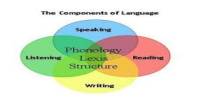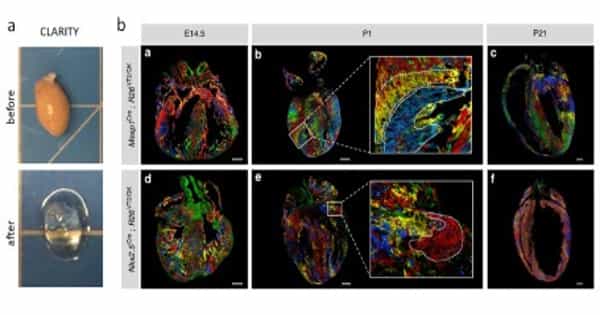1.1. Introduction:
All over the world academic education is not adequate to enable a student to compete with confidence and reach his goal without having experience with the outside world. As a part of my BBA Program, the twelve weeks internship program gave me the opportunity to have a practical knowledge on auditing procedure. The assignment was how ACNABIN, Chartered Accountants performs an audit and also to gain a knowledge and practical experience on how audit work is performed in corporations, companies and non-profit making organizations. To face much more complex and challenging business world in the challenging business areas, practical knowledge is essential to expand our theoretical base. To gather this practical knowledge, we were forwarded different organization after completing BBA Program. This study gave me an opportunity to observe and perform real world knowledge about the audit procedure, which is followed by ACNABIN, Chartered Accountants. In the internship period, I could relate the theoretical knowledge of auditing to practical exposure.
1.2. Origin of the report:
In today’s world, education is the imperative tool for understanding the real world and applying knowledge for betterment of the society as well as in Business Sector. From the education session the theoretical knowledge is obtained from various courses throughout the programs, which is only the half way of the subject matter. Practical knowledge has no alternative. The perfect coordination between theory and practice is of paramount importance in the context of modern business Graduates to get 10 to 12 weeks practical experience, which is known as “Internship Program”. As a student of School of Business, University of Liberal Arts Bangladesh, every student has to conduct a practical orientation i.e., Internship on any organization for fulfilling the requirements of the BBA program. The main purpose of the program is to know the real world situation and to get a glimpse of the corporate culture. I had an opportunity to work with the Auditors of ACNABIN, Chartered Accountants. With this company I tried to implement educational experience in this organization. My superiors in the audit firm assisted me in auditing different types of organizations and share their experiences which helped to understand the job role better. This report is a reflection of my working experience at this company and a summary of my responsibilities that had been bestowed on me. My organizational supervisor was “Mr. Hossain Mahmud Patwary, Assistant Manager, Audit & Consultancy of ACNABIN Chartered Accountants”. My report topic is “ The Audit Procedure of ACNABIN, Chartered Accountants.”
This was assigned by my internal supervisor Mr. Shajedul Alam, Senior Lecturer, School of Business, University of Liberal Arts Bangladesh.
1.3. Objectives of the report:
This study has some desired objectives in order to make it fruitful and effective in terms of knowledge, expertise and skills. Following are the objectives:
Broad Objectives:
To be get adjusted with the professional environment.
To apply classrooms learning, knowledge and skills.
To write and submit an Internship report & complete the graduation successfully.
Specific Objectives:
- Gathering practical knowledge of how an Audit performed by ACNABIN, Chartered Accountants.
- To know External Audit procedure of ACNABIN, Chartered Accountants.
- Gaining knowledge about the practical experience how audit works are performed in corporations, companies and non-profit making organizations.
- Acquiring knowledge and experience about the audit procedure of bank & other financial institutions as followed by the Institute of Chartered Accountants in Bangladesh (ICAB).
- Understanding the risk areas in different organizations.
- Knowing how the draft and final audit report is handed over to client.
- To know overall Audit procedure of different organizations.
1.4. Scope of the report:
Assigned in ACNABIN has been given me tremendous scope to familiarize with the audit procedure of the organization. Major parts of scope are point out below:
- Background of the host organization and also their position.
- Audit procedure, which is followed by the organization for performing any audit.
- Nature and importance of it has depicted in this study.
- Audit methodology of the firm, which is followed by the organization for performing any audit.
- Audit administration of the firm, which is followed by the organization for performing any audit.
1.5. Methodology:
I got all the information’s mainly from two types of sources. First one is primary and another is secondary source while conducting the study both primary and secondary information were explored. The primary sources of data has been collected from original sources by the investigator through field operations. And the secondary data, on the other hand, are those which have already been collected by someone else and which have been collected through the statistical process. Secondary sources of data consist of all published and reported materials including books, journals, articles etc.
The “Primary sources’ are as follows:
- Collected primary data by working with different audit teams through field operations.
- Working experience with the different audit teams of ACNABIN & Co. during my internship period.
- Discussing with engagement partner, audit manager, audit stuff and Articled students of ACNABIN & Co.
The “Secondary Sources” of data and the information are:
Website of the ACNABIN, Chartered Accountants. (www.acnabin-bd.com)
- Various books & journals, Internet etc.
- Collected secondary data from the annual audit report, management audit report, accounting system & audit working papers audited by the ACNABIN & Co.
- Collected secondary data from the different publications of the Institute of Chartered Accountants of Bangladesh (ICAB).
1.6. Limitation of the study:
The study is conducted with an objective to make a thorough study of external audit procedure. I have got many facilities and faced some obstacles during my study. These obstacles may be termed as limitation of the study. These limitations are as follows:
- As an independent audit firm the information of the case study is not adequate for this study.
- Annual Audit Procedures are confidential documents or objects to the firm, so it is very difficult to present the exact format of annual audit procedures of the firm.
- To some extend the exact audit procedure is not followed due to time and other constrains.
- As the internship was the first practical experience, it was not possible for me to know all and everything of audit procedure.
2.1 Background:
In this era of globalization nothing can be more important than credible and comparable financial statements. Donors and investors rely heavily on the financial statements for making capital allocation decision. International investors diffuse their capital among various sectors depending on the performance of the respective sectors. For these Bretton Woods Institutions (e.g. World Bank, IMF, and UNDP) stress highly on credible financial statements which is the result of auditing. Every international standard setter like IFAC, IASB, and IOSCO is stressing more on adoption of ISA’s and IAS’s for reporting harmonization than ever. Bigger donors and investors are now crunching the numbers for investing their wealth.
The audit market in Bangladesh has attained robust growth with the economic growth at 5.5% (GOB 1996-2004). Before independence ICAP used to be the professional body for auditing. After independence in 1973 ICAB (Institute of Chartered Accountants of Bangladesh) came into play. Since then ICAB has been the main professional body responsible for private and public sector auditing in Bangladesh. There are currently 171 audit firms. Only six audit firms have international affiliation. Most of these firms (110) are sole proprietorship firms. Majority of the partnership firms are two partner firms (47). A firm can be formed with highest 7 partners according to the rules of ICAB. Most of the firms (147) operate from single office. 23 of the firms operate from two offices while only 1 firm has three offices.
2.2. Profile of ACNABIN
Chartered Accountant
ACNABIN Chartered Accountant is one of the most reputed and successful audit firms in Bangladesh. ACNABIN partnership came into being in February 1985, with a mission to continually add value by helping clients succeed.The
long and diverse professional background of the
individual partners in academic, administrative,
audit, consultation, privatization, system design
(computerized and manual),taxation,feasibility study,
cost and management accounting and budgeting
fields have been brought together to establish a multidisciplinary organization.All the partners of the firm have an in-depth experience of working in Bangladesh and with international/foreign consultants/ organizations working in Bangladesh and overseas. The diverse and wide exposure of the partners helps to deal effectively with most of the complex situations faced by business enterprises in today’s competitive world, both in the developed and developing countries.
The name “ACNABIN” comes from the acronyms of the founder partners:
A = ABM Azizuddin
C = Anwaruddin Chowdhury
N = Abu Syed Mohammad Nayeem
A = Mohammad Akhtaruzzaman
B = ATMA Bari
I = Iftekhar Hossain
N = Mohammad Nurun Nabi.
Mission
We adhere to the strictest principles of client
confidentiality. The sensitive and competitive nature of
proprietary information-and the maintenance of trust-
demands it. We have built our success on such
principles. We do our utmost to earn-and keep-client
trust.
2.3. Existing partners and their area of specialization:
Name | Office | Area of Professional | |
Primary | Secondary | ||
| ABM Azizuddin | Dhaka Office | Audit | Consultancy |
| Mohammad Nurun Nabi | Dhaka Office | Audit | Consultancy |
| Iftekhar Hossain | Dhaka Office | Consultancy | Audit |
| ATMA Bari | Dhaka Office | Tax | Audit |
| M. Moniruzzaman | Dhaka Office | Audit/Tax | Consultancy |
| Md. Rokonuzzaman | Dhaka Office | Audit | Consultancy |
| Abu Syed Mohammad Nayeem | Dhaka Office | Consultancy | Audit |
ACNABIN: At A Glance
|
The numbers of personnel available with the firm are as follows:
| ü Partners | 07 |
| ü Professional Staff : | |
| – Directors/Qualified Assistants | 04 |
| – Audit Senior | 38 |
| – Articled Students | 203 |
| – Probationers | 50 |
| – Support Staff | 28 |
| Total | 330 |
In addition, requisite personnel of relevant disciplines are inducted on project basis for specialized consultancy assignments.
As the firm intends to maintain a high standard in its professional work its recruitment procedure is quite stringent. Moreover, after recruitment it provides in-house training to its professional staff.
2.4. Relationship with International Organization:
ACNABIN represented BDO in Bangladesh during 1990-92 and Arthur Andersen (AA) from 1992 till their collapse in 2002. During the association with Andersen we adopted AA’s technical procedures and commitment to serve clients. Our working standard was periodically reviewed by AA. Services provided to AA clients included:
1. Due diligence review 4. Tax advice
2. Joint venture enquiries 5. Statutory regulations
3. Business valuation 6. Establishing business presence
From July 2005 ACNABIN is an independent member of Baker Tilly International.
Baker Tilly International:
Baker Tilly International is a network of high quality, independent accountancy and business services firms. All of them are committed to providing the best possible service to their clients, in their own marketplaces, and across the world, wherever the client needs help. Baker Tilly International is the 8th largest network in the world by fee income and is represented by 122 firms in 75 countries, with a global fee income of $1.82 billion and 18,600 staff worldwide. In 2003, the network experienced a 17% growth in revenue (July 2004).
3.1. Audit procedures followed by ACNABIN:
ACNABIN follows Arthur Andersen’s Audit procedure. The primary goal of ACNABIN at the time of involving in any audit engagement is to provide the opinion on Financial Statements in accordance with Bangladesh Standards on Auditing (BSA) as well as International Standards on Auditing (ISA). We also seek to provide auditing and business consultancy services that are innovative, efficient and most importantly responsive to our client’s business needs.
There are seven steps involved in the procedures that come one after another. Steps are as follows:
- Identity Overall Goals
2. Gather & Evaluate Initial Information
3. Assess General Risks
4. Assess Account-Specific Risks
5. Develop Effective and Efficient Audit Plan/Work Program
6. Conduct Audit Testing
7. Evaluate and Communicate Audit Results
3.1.1. Identify firm’s overall goals:
The goal of the firm in conducting an audit is to express an opinion as to whether the financial statements are prepared and presented fairly in accordance with Generally Accepted Accounting Principles (GAAP). The audit team considers accounting standards in formulating an opinion. In forming an opinion, the audit team also addresses responsibilities for:
- Errors
- Irregularities and other matters
- Efficiency
- Client value
3.1.1.1. Errors
Errors are unintentional misstatements or omissions of accounts of disclosures in financial statements and may involve:
a) Mistakes in gathering or processing accounting data from which financial statements are prepared.
b) Incorrect accounting estimates arising from oversight or misinterpretation of facts and;
c) Mistakes in the application of accounting principles relating to amount, classification, manner of presentation or disclosure.
The audit team is required to design the audit to provide reasonable assurance of detection of material errors.
3.1.1.2. Irregularities and other matters
Irregularities are intentional misstatements or omission of amounts or disclosures in financial statements, including fraudulent financial reporting and misappropriation of assets. So there is always a risk that material irregularities may occur and not be detected. This risk is increased by the possibility of management’s override of internal controls, collusion, forgery, or unrecorded transactions.
3.1.1.3. Efficiency
The audit team should design audit procedures that accomplish the overall goals discussed above in the most efficient manner. Performing an efficient audit involves:
a) Performing risk assessment and planning with adequate partner and manager involvement.
b) Designing the combination of audit procedures based on the risk assessment that will efficiently reduce the risk of undetected material misstatements.
c) Assigning work to adequately trained and supervised persons with appropriate experience and skill levels.
3.1.1.4. Client Value
It has long been a tradition of the firm to provide enhanced value to clients as an integral part of our audits. This strategy has allowed us to differentiate our approach from that of other firms. Delivering added value as an integral part of an audit and effectively communicating the added value information to top management, directors etc. is a key factor in building and maintaining a sound client relationship.
3.1.2. Gather & evaluate initial information:
After involving with the client, our first task is to collect and evaluate the relevant and necessary information related to the client’s business for the purpose of:
- Understanding the client’s business
- Considering the internal control structure
- Identifying client expectation
- Considering materiality.
3.1.2.1. Understand the client’s business
Before involving in an audit, the auditor should understand the client business properly. Proper planning and designing of an audit is dependent on proper understanding of client’s business. So after appointing by a client, we, the members of an audit team use various sources to gain an understanding of client business. Differences sources which provide us client’s business information are as follows:
Annual report
Minutes
Internal Reports
Previous year’s audit Work Papers
Discussion with client.
3.1.2.2. Consider internal control structure
Every business has some kind of accounting system by which transactions are processed, and records are maintained. The existence of a reliable system of internal control can be a great help to the auditor, because the objectives of the system should be:
a) Ensuring that the records are complete, accurate and properly authorized;
b) Detecting errors and fraud.
After involving with a client, we try to understand the internal control structure of the client business as much as possible because understanding of client’s internal control structure helps us to determine the extent of our audit tasks.
3.1.2.3. Identify client expectation
As external auditor, we should identify the client’s expectation and design and perform the audit to meet the client expectation.
3.1.2.4. Consider materiality
Information is material if its omission or misstatement could influence the economic decisions of users taken on the basis of the financial statements. Materiality depends on the size of the item or error judged in the particular circumstances of its omission or misstatement.
3.1.3. Assess general risks:
During audit planning and risk assessment, we obtain initial audit evidence in order to:
1. Effectively assess the inherent risk of potential financial statement misstatements,
2. Identify indicators of possible going concern problems, and
3. Identify account specific risk and design an overall audit approach to provide reasonable assurance.
The assessment of risk is accomplished using a “top-down” approach. The audit team focuses initially on high level information. The nature and extent of documentation will vary significantly based on an entity’s size, complexity, ownership characteristics, and level of risk.
3.1.4. Assess account-specific risks:
Specific Risk Analysis (SRA) builds on information obtained during General Risk Assessment (GRA) and is completed after consideration of the evaluation of the internal control system. SRA is done to design the nature and extent of substantive tests on account level.
3.1.4.1. At the Account Balance and Class of Transaction
For the account balance and class of transaction level risk assessment the following major account heads should be considered:
Cash, Bank, Inventory, Fixed Assets, Accounts Receivables, Accounts Payables, Revenue, Expense, Payroll, Net Assets, Retained Earnings, or Fund balances, Other Assets, Other Liabilities, Investment , Loan.
We generally assess the risks at account balance level in view of the following items:
- Financial statement accounts likely to the susceptible to misstatement.
- The complexity of underlying transactions and other events which might require using the work of an expert.
- The degree of judgment involved in determining account balances.
- Susceptibility of assets to loss or misappropriation.
- The completion of unusual and complex transactions, particularly at or near period end.
- Transactions not subjected to ordinary processing.
3.1.4.2. Audit Risks
In determining the nature, timing and extent of substantive procedures required to reduce audit risk to an acceptably how level, we, the auditor consider the assessed levels of inherent and control risks. In this regard we consider:
a) The nature of substantive procedures,
b) The timing of substantive procedures, and
c) The extent of substantive procedure.
3.1.4.3. Consideration of Fraud and Error
We have a professional responsibility for materially misstated financial statements resulting from errors and irregularities. As auditors, we must provide reasonable assurance that such materials errors and irregularities are detected.
The potential for financial statement fraud exists on every engagement. To address the risk of potential fraud we must:
Assess the risk of potential fraud
Design our audit procedures to respond to identified risks
We need to perform our audit with appropriate professional skepticisms and due processional care.
3.1.4.4. Inquiries of Management
When planning the audit, we make inquiries of management:
a) To obtain an understanding of:
i. Management’s assessment of the risk that the financial statements may be materially misstated as a result of fraud; and
ii. Management has put the accounting and internal control systems in place to address such risk;
b) To obtain knowledge of management understands regarding the accounting and internal control system in place to prevent and detect error;
c) To determine whether management is aware of any known fraud that has affected the entity or suspected fraud that the entity is investigating; and
d) To determine whether management has discovered any material errors.
3.1.4.5. Assessment of Inherent Risk and Control Risk
When assessing inherent risk and control risk, we generally consider how the financial statements might be materially misstated as a result of fraud or error. In considering the risk of material misstatement resulting from fraud, the auditor should consider whether fraud risk factors indicate the possibility of either fraudulent financial reporting or misappropriation of assets.
3.1.4.6. Assessment of Detection Risk
Based on the assessment of inherent and control risks, we design substantive procedures to reduce the detection risk to an acceptably low level. In designing the substantive procedures, we address the fraud risk factors that have been identified as being present.
3.1.4.7. Documentation
If during the performance of the audit, fraud risk factors are identified that cause the auditor to believe that additional audit procedures are necessary, the auditor should document the presence of such risk factors and the auditor’s response to them.
3.1.4.8. Management Representations
The auditor should obtain written representations from management that:
It acknowledges its responsibility for the implementation and operations of accounting and internal control systems that are designed to prevent and detect fraud and error.
It has disclosed to the auditor the results of its assessment of the risk that the financial statements may be materially misstated as a result of fraud.
3.1.4.9. Communication
When the auditor identifies a misstatement resulting from fraud, or a suspected fraud, or error, then auditor’s responsibility is to communicate that to management, those charged with governance and, in some circumstances, to regulatory and enforcement authorities.
3.1.5. Development of effective and efficient audit plan/ work program:
Work program is a list of procedures that are needed to be performed to conduct the audit. The program may also contain the audit objectives for each area and should have sufficient detail to serve as a set of instructions to the assistants involved in the audit, and as a means to control the proper execution of the work.
In ACNABIN, we use work programs for different types of account head. Work programs were developed for different types of business and for different types of account heads. Usually an audit work program contains-
- Client procedures and background information.
- Audit objectives.
- Audit procedures.
- Performance and results of work.
- Conclusions.
The work program must be completed and any revisions in the program, made during testing, must be adequately explained and approved by the senior or manager.
3.1.6. Conduct audit testing:
After completing work program, the audit team conducts two types of tests which we mentioned in our earlier discussion. Two tests are:
- Test of Controls
- Substantive Test
3.1.6.1. Test of controls
For the effectiveness and efficiency of audit work, we conduct Test of Control at least in the following three major accounting areas, which in turn will cover most of the account level tests in any client.
Items included in the three tests of control forms can be modified to include, to delete and also to customize the test for each and every different type of client specific procedures. Following groups of Internal controls may be considered while developing the forms for internal control tests.
Authorization controls are prevention-oriented. That is, they are designed to prevent misstatements from occurring as a result of unauthorized or improperly authorized transactions.
Transaction processing controls are also prevention-oriented. They are designed to prevent misstatements from occurring during the processing of transactions and generally consist of a hierarchy of related controls.
Substantiation and evaluation controls are detection-oriented (i.e., they are designed to detect misstatements that have occurred). They ordinarily address account balances or groups of transactions rather than individual transactions.
Physical safeguard controls are prevention-oriented and consist of segregation of duties and other techniques to limit access to assets, records, forms, and processing areas and procedures. Physical verification of cash with the account balance. (Appendix-3)
3.1.6.2. Substantive tests
Substantive tests are procedures performed to detect misstatements in financial statement balances. We perform the following two types of Substantive Tests:
- Analytical procedures
- Detail Tests
- Analytical Procedures
“Analytical procedures” means the analysis of significant ratios and trends including the resulting investigation of fluctuations and relationships that are inconsistent with other relevant information or deviate from predicted amounts.
Analytical Procedures are the testing of financial information by evaluating actual vs. expected relationships among financial and non-financial data. Analytical procedures may be used as a substantive test of balances and for a final review of year end financial statements.
The auditor should apply analytical procedures at the planning and overall review stages of the audit. Analytical procedures may also be applied at other stages.
Analytical procedures include the consideration of comparisons of the entity’s financial information with –
· Comparable information for prior periods.
· Anticipated results of the entity, such as budgets or forecasts, or expectations of the auditor, such as an estimation of depreciation.
· Similar industry information, such as a comparison of the entity’s ratio of sales to accounts receivable with industry averages or with other entities of comparable size in the same industry.
We generally apply analytical procedures at or near the end of the audit when forming an overall conclusion as to whether the financial statements as a whole are consistent with the auditor’s knowledge of the business. (Appendix- 4, 5 & 6)
Detail Tests
Detailed tests may include the following:
a) Confirmation of third parties- Bank, A/P, A/R
b) Observation of asset – Inventory count, FA, Cash Count, Payroll cheques distribution
c) Tests of reconciliation- bank reconciliation, inter-co reconciliation
d) Analysis of account
e) Vouching
f) Exception tests
g) Cut off tests
h) Inquire
i) Valuation tests
j) Reading of FS
k) Reading of minute of meeting of stockholder, directors and committee.
Confirmations
The audit team should determine whether the use of external confirmations is necessary to obtain sufficient appropriate audit evidence to support certain financial statement assertions. In some situations, audit evidence from external sources is more reliable than audit evidence
generated internally, and that written audit evidence is more reliable than audit evidence in oral form. Accordingly, audit evidence in the form of written responses to confirmation requests received directly by the auditor from third parties who are not related to the entity being audited, may assist in reducing audit risk for the related assertions to an acceptably low level.
Examples of accounts receivables, accounts payables and bank balance confirmation form that are used by ACNABIN to confirm the client’s balance of various accounts receivables, accounts payables and bank are given in Appendix- 7 & 8.
3.1.7. Evaluate and communicate audit results:
At the last stage of audit, the audit team communicates the result of the audit to the management and the stakeholders of the company. The audit team issues two types of reports:
a) External Report which is commonly known as the “Auditor’s report”
b) Internal Report which is known as “Management Letter”.
c) We therefore have three areas to deal with:
i. The unqualified audit report;
ii. Qualifications in audit reports;
iii. The management letter (also known as letter of weakness or letter of comment).
3.1.7.1. External report/ auditor’s report
Basic Elements
The auditor’s report includes the following basic elements, ordinarily in the following layout:
a. Title;
b. Addressee;
c. Opening or introductory paragraph
i. Identification of the financial statements audited;
ii. A statement of the responsibility of the entity’s management and the responsibility of the auditor;
d. Scope paragraph (describing the nature of an audit)
i. A reference to the BSA;
ii. A description of the work the auditor performed;
e. Opinion paragraph containing
i. A reference to the financial reporting framework used to prepare the financial statements: and
ii. An expression of opinion on the financial statements;
f. Date of the report;
g. Auditor’s address; and
h. Auditor’s signature.
Modified Reports
In addition to unqualified or qualified, we sometimes provide modified audit report. An auditor’s report is considered to be modified in the following situations:
1. Matters That Do Not Affect the Auditor’s Opinion
a) emphasis of matter
2. Matters That Do Affect the Auditor’s Opinion
a) Qualified opinion,
b) Disclaimer of opinion, or
c) Adverse opinion.
Matters That Do Not Affect the Auditor’s Opinion
In certain circumstances, an auditor’s report may be modified by adding an emphasis of matter paragraph to highlight:
i. a material matter regarding a going concern problem.
ii. a significant uncertainty (other than a going concern problem)
The addition of such an emphasis of matter paragraph does not affect the auditor’s opinion. The paragraph would preferably be included after the opinion paragraph and would ordinarily refer to the fact that the auditor’s opinion is not qualified in this respect.
Matters That Do Affect the Auditor’s Opinion (Qualifications in audit reports)
The nature of the circumstances giving rise to a qualification of opinion will generally fall into one of two categories:
a) Where there is an uncertainty which prevents the auditor from forming an opinion on a matter (uncertainty); or
b) Where the auditor is able to form an opinion on a matter but this conflicts with the view given by the financial statements (disagreement).
· In a disclaimer of opinion the auditor states that he is unable to form an opinion as to whether the financial statements give a true and fair view.
· In an adverse opinion the auditor states that in his opinion the financial statements do not give a true and fair view.
3.1.7.2. Internal report/ management letter
As a value added service to the client ACNABIN & Co. gives a Management Letter to its audit clients. The main purpose of the letter of management is to draw the attention of management to areas of weakness requiring rectification. It is also possible for the auditor to suggest areas where economies or improved efficiency are possible. It will usually deal with matters not serious enough to justify an audit qualification.
Purposes of Management Letter
1. The principal purpose of a report to management is to enable the auditor to give his comments on the accounting records, systems and controls that he has examined. Significant areas of weakness in systems and controls that might lead to material errors should be highlighted and brought to management’s attention.
2. As a secondary purpose, a letter to management may also be used to provide management with other constructive advice.
3. A letter to management is also a useful means of communicating matters that have come to the auditor’s attention during the audit that might have an impact on future audits.
Contents
Generally the following matters, arising out of the audit, will be included in a letter to management:
1. Weaknesses in the structure of accounting systems and internal controls;
2. Deficiencies in the operation of accounting systems and internal controls;
3. Unsuitable accounting policies and practices;
4. Non-compliance with accounting standards or legislation.
Points made in previous years’ management letter should be reviewed. Where they have not been dealt with effectively, the auditors should enquire why appropriate action has not been taken.
Management response
The auditor should request a reply to all the points raised, indicating what action management intends to take as a result of the comments made in the management letter. It should be made clear in the report that the auditor expects at least an acknowledgement of the letter or, where he considers it appropriate, the directors’ discussion of the letter to be recorded in the board minutes.
Basic Elements of the Management Letter
The management letter includes the following basic elements, ordinarily in the following layout:
a) Addressee;
b) Transmittal Letter
c) Title;
d) Background Information
e) Scope of Work, e.g.
i. Compliance;
ii. Authorization;
iii. Accuracy;
iv. Monitoring;
v. Safeguarding
f) Findings: Each finding consists of four different sections, as under:
i. Fact (What it is)
ii. Effect (What harm was caused by not complying with the criteria)
iii. Recommendation (That corrects the cause and the condition as applicable)
iv. Management Response
g) Date of the report;
h) Auditor’s address; and
i) Auditor’s signature.
A form of “Audit Findings & Conclusion Summary” that is provided by ACNABIN to the management of the client is given in Appendix-
In this report, I have tried my level best to cover the detail audit procedure as followed by ACNABIN in providing auditing service to its clients. I have studied the rules and regulations that are required by the Bangladesh Bank and ICAB for auditing. I think that ACNABIN performs an excellent job in providing audit services for the clients. The staffs who are directly associated with the excellence of audit service deserve to be acclaimed for their endeavor to this end. ACNABIN believes in creating the difference in the market place by offering impeccable quality.















